#Vibration Sensors
Text
vibration sensors
Unlock unparalleled sensitivity with STI's vibration sensors. Meticulously calibrated for optimal performance, our sensors empower your testing processes by capturing the subtlest vibrations with precision. Trust STI for sensitivity that makes a difference.
0 notes
Text
Wireless Vibration Sensors for Condition Monitoring
Nanoprecise sensor technology is revolutionizing the way products are monitored and analyzed. By using nanoparticles, these sensors can identify defects with great precision, leading to more accurate product quality and safety.
Condition monitoring is an important part of maintenance for any machinery. By understanding the condition of the machinery, operators can make informed decisions about when and how to repair or replace parts. One method of condition monitoring is using vibration sensors.
Vibration sensors are often used to detect bearings that are in failure. The sensors can be very accurate in detecting when a bearing has failed and can provide information about the severity of the failure.
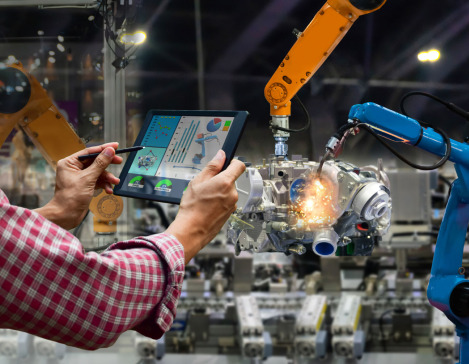
What are wireless vibration sensors?
Wireless vibration sensors are a common way to detect movement in space. These sensors use radio waves to send out vibrations and measure the time it takes to receive them. This information can then be used to determine the size, shape, and location of objects in the space.
Since these sensors work without any wires, they can be used in places where traditional sensors wouldn’t be able to reach them. This makes them a popular choice for safety applications, such as warehouse floors or storage areas.
Additionally, wireless vibration sensors can be used for other purposes, such as monitoring environmental conditions or detecting when something is being lifted or moved. They are also useful for detecting smaller objects that might otherwise go unnoticed.
Benefits of using wireless vibration sensors
Wireless vibration sensors are becoming increasingly popular as a way to detect and monitor equipment in a variety of settings.
These sensors can be used in a variety of applications, such as manufacturing, healthcare, and transportation.
They provide an easy way to detect when something is wrong with the equipment, and they can also be used to monitor the condition of the equipment over time.
Wireless vibration sensors are also relatively inexpensive, and they can be installed easily without requiring any special skills or knowledge.
Finally, wireless vibration sensors can be used in a variety of languages, making them an ideal option for global businesses.
Types of wireless vibration sensors
When it comes to finding the right vibration sensor, there are a few things to consider. One of the most important factors is the type of vibration that you are trying to detect. There are three main types of wireless vibration sensors: capacitive, magnetic, and piezoelectric.
Capacitive sensors use an electric field to detect vibrations. They are most commonly used in low-frequency applications such as industrial robotics or medical equipment. Magnetic sensors work with a magnetism that is generated by vibration. They can be more accurate when detecting high-frequency vibrations, but they can also be less responsive in low-frequency environments. Piezoelectric sensors use electricity and pressure to detect vibrations. This makes them ideal for detecting tremors and other low-level motions.
Wireless vibration sensor applications
Wireless vibration sensors are becoming increasingly popular in many industries due to their low cost and ability to be integrated into a variety of devices. Their versatility makes them ideal for a variety of applications, including automotive, medical, industrial, and aerospace.
The most common wireless vibration sensors use radio frequency (RF) signals to detect movement. They work best in environments with low levels of noise, such as inside engines or aircraft cabins. RF sensors typically have a longer lifespan than other types of sensors and can be more sensitive at lower frequencies.
Some wireless vibration sensors also use piezoelectric crystals to generate an electric charge when subjected to vibration. Piezoelectric sensors are less common than RF ones but are better at detecting high-frequency vibrations. They have shorter lifespans and require more power to operate.
Conclusion
Wireless vibration sensors are a valuable tool for condition monitoring. They can be used to detect and diagnose issues with machinery, vehicles, and other equipment. By understanding the vibrations that are being outputted, engineers can make informed decisions about how to correct or improve the situation. For more information on wireless vibration sensors, please contact a specialist company like Nanoprecise.
0 notes
Text
#Vibration Sensors#industrial control systems#plc system#industrial automation#industrial cellular modems
1 note
·
View note
Text
Receive the Rewards from Premium-Quality Vibration Monitoring Products at Cost-Effective Prices
Taking into account where you can get the best channel transmitter or vibration screens or a couple of other such gadgets and things at reasonable costs? Your central goal for this will end at STI Vibration Monitoring Inc. They are the most trustworthy and expected name in offering these sorts of help and results of predominant grade and at reasonable costs.
They have tendency in irrelevant exertion decisions to vibration sensors in Bentley, Nevada, by bringing single-channel transmitters and screens into the market. By making a seeing plan subject to single channels, the costs of machine security systems are as of now out and out more sensible. They give essential and financially smart answers for their clients while giving the versatility anticipated in the present genuine market.
STI Vibration Monitoring Inc. offers a total line of vibration meter for Industrial Rotating Machinery. The Switches address both, new foundations and retrofitting obsolete units. They are easy to mount. They moreover give top-quality measuring vibration and condition monitoring
Remaining mindful of courses and upkeep needs on a creating number of assets can be irksome. Little by little emergencies and a contracting labor force make it hard to keep gear running preferably. Vibration screening licenses get-togethers to crisis the strength of assets; research and dissect the apparent asset; and play out the best obliging movement with amazing preparation.
Consequently, right away, visit their website page www.stiweb.com today and catch a brief gander at their things and associations at fiscally shrewd decisions.
0 notes
Text
atrociously sticky adhesive, gone, due to the powers of a heat gun and goo-gone
#all the oils have been stripped from my hands#smart home bullshit#got a pile of tilt/vibration sensors to detect two main things:#did i remember to put the frozen bagels in the oven before i started making coffee?#and: have they picked up the garbage bins yet?#but the fucking things came with so much of the world's most annoying and stubborn adhesive on them for fuck only knows why
34 notes
·
View notes
Text
thinking about that line that sigma has when he's at nepal that goes something along the lines of "hmm, the fluctuations here seem peculiar" (i don't remember what he said exactly) but like,,, what did he mean by that?? siebren wdym,,, what exactly do you sense 👁👁
#also i like how this confirms my hc where sigma is able to sense/feel/perceive these vibrations/energy/fluctuations (whatever you wanna call#lol imagine talon learning this information#they'd treat him like some sort of search dog jsjdjsjd#'hmmm... our sensors indicate that there is some sort of energy anomaly at this location. sigma can you go look for the precise location??'#sigma: ahh why yes of course!!!#[thirty minutes later]#sigma: [pointing at a spot in the ground] it's right here :]#jsjdjsjsjdjs i think he'd be better suited off as a reconnaissance agent rather than an agent that talon uses when they need brute force#like... man can make no noises because he floats everywhere#but then again he is a very large man#i think he'd be seen before anyone hears him lmao
5 notes
·
View notes
Text
etho redstone r&d letsplay episode with a sick new redstone contraption [VIBRATING]
#khaos.txt#ITS SO COOL#i love love love how he repurposed the hopper clock timer to be a memory switch#its so smart#cuz most ppl would just think to put a timer/delay on their skulk sensor-activated things (im specifically thinking bdubs's conveyor on hc)#but no!! he figured out a smart way for the redstone to *know* for certain that u're there!!!#every day my respect for this man increases#like he's still finding new and creative ways to use redstone ingame and im just [VIBRATING]#and also? its so simple? like its incredibly simple and compact and just WOAGH
2 notes
·
View notes
Text
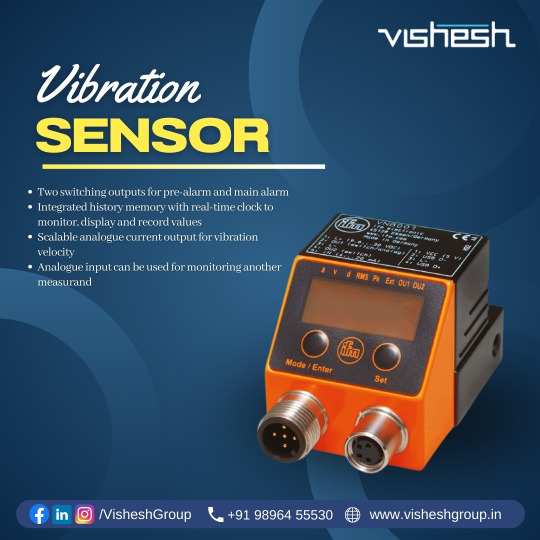
Unveiling the Power of Vibration Sensor
Two Switching Outputs
Employs pre-alarm and main alarm outputs for enhanced monitoring and response.
Integrated History Memory with Real-Time Clock
Facilitates seamless data monitoring, display, and recording, bolstering operational efficiency.
Scalable Analogue Current Output
Delivers precise measurements of vibration velocity, optimizing performance analysis.
Versatile Analogue Input
Enables monitoring of additional measurements, expanding its utility beyond vibration detection.
A Multifaceted Guardian
Comprehensive Insights
Provides deep insights into machinery performance and environmental conditions.
Proactive Maintenance
Alerts to potential issues before they escalate, ensuring preemptive actions.
Adaptability Across Industries
Reliable tool for diverse sectors, ensuring optimal functioning and strategic maintenance.
Conclusion: Empowering Proactive Decision-Making
The vibration sensor emerges as a cornerstone in monitoring and control, empowering proactive decision-making and safeguarding critical systems. Its advanced features and adaptability make it indispensable across industries, ensuring optimal performance and preemptive maintenance
#Vibration Sensor#Vibration Sensor automation#Vibration Sensor for industrial agricaltural use#Vibration Sensor for factory#Vibration Sensor india#Vibration Sensor buy online
1 note
·
View note
Text
The Power of Predictive Maintenance Vibration Analysis Sensors
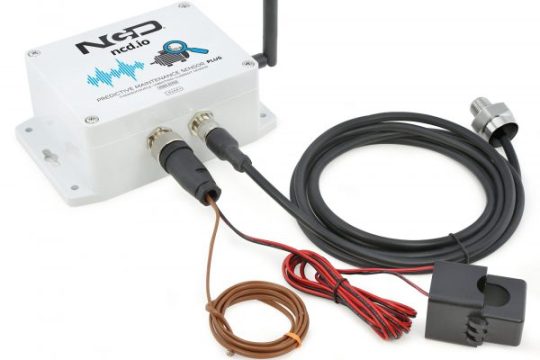
The integration of vibration sensors marks a significant leap forward in predictive maintenance. Wireless vibration sensors for predictive maintenance allow the seamless process of fault detection, swift responses, precision in analysis, the sophistication of machine learning, downtime reduction strategies, and the ultimate optimization of production efficiency.
For More:
0 notes
Text
Vibration Sensor Market Size, Share, Trends, Outlook, Forecast 2024-2032
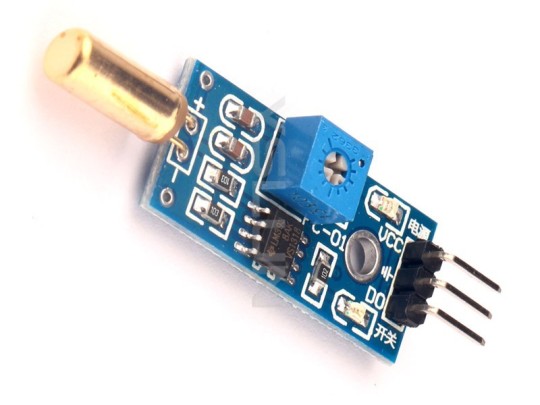
According to IMARC Group latest report titled “Vibration Sensor Market: Global Industry Trends, Share, Size, Growth, Opportunity and Forecast 2024-2032”, offers a comprehensive analysis of the industry, which comprises insights on vibration sensor market forecast. The report also includes competitor and regional analysis, and contemporary advancements in the global market.
The global vibration sensor market size reached US$ 4.5 Billion in 2023. Looking forward, IMARC Group expects the market to reach US$ 7.4 Billion by 2032, exhibiting a growth rate (CAGR) of 5.4% during 2024-2032.
Request a Free Sample Report: https://www.imarcgroup.com/vibration-sensor-market/requestsample
A vibration sensor, also known as an accelerometer or vibration transducer, is a device designed to detect and measure vibrations in machinery or structures. It converts mechanical vibrations into electrical signals, providing valuable data for monitoring equipment health and identifying potential issues. Vibration sensors are widely used in various industries, including manufacturing, aerospace, automotive, and infrastructure. They help prevent equipment failure, reduce maintenance costs, and enhance overall operational efficiency by detecting abnormal vibrations that may indicate misalignments, imbalance, or wear. The collected data aids in predictive maintenance strategies, ensuring timely intervention and preventing unexpected breakdowns in machinery or structural components.
Market Trends:
The global market is majorly driven by the increasing emphasis on predictive maintenance. In line with this, industries worldwide are increasingly adopting predictive maintenance strategies, leveraging vibration sensors to monitor equipment health. These sensors play a pivotal role in detecting abnormalities in machinery early on, reducing downtime, and optimizing maintenance schedules. Furthermore, the rise of Industry 4.0 and the broader trend of industrial automation contribute significantly to the market's growth. Vibration sensors are integral components of smart manufacturing systems, enabling real-time monitoring and control of machinery. This facilitates data-driven decision-making, improves overall equipment effectiveness, and supports the transition toward more efficient and connected industrial processes. Besides, the expanding use of vibration sensors in diverse applications, including automotive, aerospace, healthcare, and infrastructure, drives market diversification. In the automotive sector, for example, vibration sensors contribute to vehicle safety and performance monitoring. In healthcare, they play a role in medical diagnostics and monitoring equipment. Additionally, rapid technological advancements, particularly in sensor design and data analytics, enhance the capabilities of vibration sensors. Integrated wireless communication and Internet of Things (IoT) connectivity enable seamless data transmission and remote monitoring, fostering the adoption of these sensors across various industries.
View Full Report with TOC & List of Figure: https://www.imarcgroup.com/vibration-sensor-market
Competitive Landscape
The competitive landscape of the industry has also been examined along with the profiles of the key players operating in the market.
Analog Devices Inc.
Bosch Sensortec GmbH (Robert Bosch GmbH)
Dytran Instruments Inc.
Emerson Electric Corp.
FUTEK Advanced Sensor Technology Inc.
Hansford Sensors Ltd.
Honeywell International Inc.
National Instruments Corporation
NXP Semiconductors N.V.
Rockwell Automation
Safran Colibrys SA
SKF
TE Connectivity Ltd.
Texas Instruments Incorporated.
Key Market Segmentation:
Our report has categorized the market based on region, product, technology, material, and end-use industry.
Breakup by Product:
Accelerometers
Velocity Sensors
Non-Contact Displacement Transducers
Others
Breakup by Technology:
Piezoresistive
Strain Gauge
Variable Capacitance
Optical
Others
Breakup by Material:
Doped Silicon
Piezoelectric Ceramics
Quartz
Breakup by End-Use Industry:
Automotive
Healthcare
Aerospace and Defence
Consumer Electronics
Industrial Machinery
Others
Breakup by Region:
North America (United States, Canada)
Europe (Germany, France, United Kingdom, Italy, Spain, Russia, Others)
Asia Pacific (China, Japan, India, Australia, Indonesia, South Korea, Others)
Latin America (Brazil, Mexico, Others)
Middle East and Africa
Key Highlights of the Report:
Market Performance (2018-2023)
Market Outlook (2024-2032)
Porter’s Five Forces Analysis
Market Drivers and Success Factors
SWOT Analysis
Value Chain
Comprehensive Mapping of the Competitive Landscape
About Us:
IMARC Group is a leading market research company that offers management strategy and market research worldwide. We partner with clients in all sectors and regions to identify their highest-value opportunities, address their most critical challenges, and transform their businesses.
IMARC’s information products include major market, scientific, economic and technological developments for business leaders in pharmaceutical, industrial, and high technology organizations. Market forecasts and industry analysis for biotechnology, advanced materials, pharmaceuticals, food and beverage, travel and tourism, nanotechnology and novel processing methods are at the top of the company’s expertise.
Contact US:
IMARC Group
134 N 4th St. Brooklyn, NY 11249, USA
Email: [email protected]
Tel No:(D) +91 120 433 0800
United States: +1-631-791-1145 | United Kingdom: +44-753-713-2163
0 notes
Text
Choosing the Right Sensor Cables for Your Vibration Sensors
When it comes to monitoring and analyzing vibrations in industrial settings, having the right equipment is crucial. Vibration sensors are the backbone of any predictive maintenance program, but they can't do their job effectively without the proper sensor cables. In this article, we'll explore the importance of choosing the right sensor cables for your vibration sensors.
Understanding Vibration Sensors: They play a vital role in preventing unexpected breakdowns and ensuring the safety and efficiency of operations. However, the performance of vibration sensors depends not only on their quality but also on the cables connecting them to data acquisition systems.
The Role of Sensor Cables: These cables are responsible for transmitting the sensor's data accurately and reliably to the monitoring equipment. Using subpar or incompatible cables can lead to data loss, inaccurate readings, and increased maintenance costs.
Choosing the Right Sensor Cables: Compatibility:Ensure that the sensor cables are compatible with your vibration sensors and data acquisition equipment. Different sensors may require specific cable types. Cable Length: Select the appropriate cable length to reach from the sensor to the data acquisition unit. Avoid excessive cable lengths, which can introduce signal degradation.
Shielding: Look for cables with adequate shielding to protect against electromagnetic interference (EMI) and radio-frequency interference (RFI), which can distort sensor readings. Durability: In industrial environments, sensor cables are exposed to harsh conditions. Choose cables with robust insulation and jacket materials to withstand temperature variations, moisture, and physical wear. Connector Types: Ensure that the connectors on the sensor cables match those on your sensors and data acquisition equipment.
Conclusion: Investing in the rightsensor cables is essential for maintaining the accuracy and reliability of your vibration sensors. By considering factors like compatibility, cable length, shielding, durability, and connector types, you can optimize your vibration monitoring system's performance, reducing down time and maintenance costs. For high-quality sensor cables and vibration sensors, visit to explore a range of options tailored to your specific needs.
0 notes
Text
Accelerometer and Vibration Sensor Market
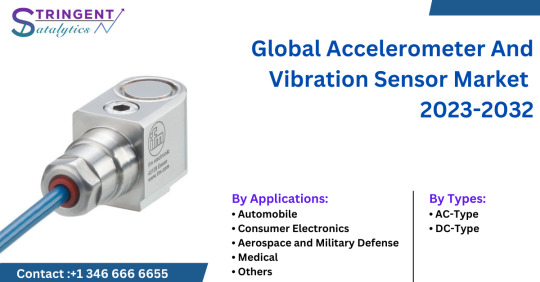
0 notes
Text
How to make a factory smart

The term “SMART FACTORY” is becoming more popular, and is often related to industry 4.0. SMART factories are critical to achieving Industry 4.0 expectations. The strategic importance of SMART FACTORY is undeniable, as early adopters have reported operating more efficiently and driving more to the bottom line.
According to Deloitte, in the United States alone, 86% of manufacturers believe that smart factories will be the main drivers of competition by 2025.Furthermore, 83 percent believe that smart factories will transform the way products are made.
This post will discuss what a smart factory is, its benefits, how to get started, and how solutions provided by CIMCON can help with the process.
What is a SMART FACTORY
SMART FACTORY is a networked industrial facility that combines data, collecting results from devices, processes, machines, and apps to generate actionable insights. The SMART FACTORY transformation highlight the importance of connectivity,the need to connect assets and data across a range of systems, platforms, and data structures, some of which were never meant to be connected. Once a facility and its assets are connected with the use of Sensors and Edge Devices, they unleash a flood of information to be translated and acted upon.
SMART FACTORY Sensors / EDGE devices can be found in a variety of manufacturing environments. CIMCON provides vibration sensor VIBit and the Edge Platform CIM devices. A vibration sensor is a sensitive and calibrated instrument that detects anomalies in the functioning of real-time equipment (motor, pump, etc.). Vibration sensors can provide a warning, allowing the facility to resolve the problem before there is an accidental shutdown. The CIM device can gather data from numerous devices (wired or wireless), using the appropriate protocol and transforming the captured data into a readable format.
Challenges without a SMART FACTORY
In today’s manufacturing industry, organizations are expected to streamline operations, reduce costs, regularly update product formulas, drive supply chain efficiencies, increase employee productivity and maintain business relationships. With expectations so high, the manufacturing industries cannot afford to run into any issues that may interfere with the productivity. But without the implementation of SMART FACTORY, there are some common challenges that may come up with time.
Lengthy implementation period
Costly customization
Inflexibility
Siloed data
Risk of lagging behind new aged technology
The benefit of Smart Factory using CIMCON solutions
Agile production process: SMART FACTORY allows the manufacturer to adapt to changing client needs, budgets, and product quality requirements due to the connectivity of multiple systems, processes, devices, etc., to provide an edge on the delivery of a product.
Enhancing the efficiency and reliability of manufacturing operations: CIM devices and the sensor network will enable the industry to collect data on processes and equipment and provide alerts if there is a deviation. The acquired data is analyzed in near real-time, allowing manufacturers to immediately modify equipment parameters. The analysis of sensor-generated data throughout the manufacturing process aids in identifying trends and scope for improvement. In addition, the likelihood of human error is minimized in production procedures.
Increased visibility into operations on the shop floor: Through IIoT products, SMART FACTORY provides a greater sense of visibility into shop floor operations by providing continuous real-time updates on production operations.
Information safety: In SMART FACTORIES, data priority is necessary. So, the more technologies are involved with sensors and Edge devices, the more secure the factory must be for customers, suppliers and investors.
Predictive maintenance improves uptime: Data regarding the health and performance of equipment is communicated near-real-time to the cloud via IIoT, ensuring advanced planning in maintenance work and boosting machine availability.
Increased worker safety: Sensors are used to communicate information without the physical presence of humans to ensure maximum safety.
Step-by-step instructions for constructing a SMART FACTORY
Establish your goals and needs: To ensure you put your resources in the right places, you must also understand the “WHYs” behind your decision to implement a smart factory.
Get your personnel on board: Legacy systems are still in existence in many production plants, making the deployment of smart technologies difficult. Creating a new solution to replace an existing legacy system may incur costs such as the purchase of a new instrument and the hire of a digitally skilled individual. Because the human workforce is always an important part of the manufacturing process, it must be trained to adapt to changing conditions.
Be cyber secure: In today’s scenario of data-driven technology and usage of increased IIoT devices, data security is a rising concern. Updating security measures should be implemented to provide future-proof security from unwanted threats.
Make a new investment in instruments: To make SMART FACTORY a reality, manufacturing facilities need to invest in IIoT sensors and CIM devices to collect data from legacy machines. IIoT sensors and CIM devices help manufacturing facilities quickly adopt innovative technology for the digital transformation.
Make a new investment in hiring personnel: To adopt the new technology, the manufacturing facility needs to invest in data analysts to turn the data collected into something usable or valuable – one more area to reskill your existing personnel to fulfil the requirement. This is also an area where CIMCON can help provide technical expertise.
Open to change and keep upgrading SMART FACTORY implementation: As you and your staff grow more familiar with innovative technology and its benefits, it will become easier to continue to expand smart technologies to other facility areas. The factory is flexible and responsive and can perform in a dynamic environment.
Implementing smart factory technology with CIMCON’s product and platform
Implementing the SMART FACTORY in any business can be difficult and time-consuming. CIMCON DIGITAL is a company that can provide support for digital transformation in terms of both software and hardware, with vast experience in the development and implementation of automation using various in-house developed products, such as sensors, CIM devices, and so on.
CIMCON devices will address all the issues that will transform the industries and support in converting the factories into smart factories of the future.
Contact us today to begin your smart factory adventure.
#predictive maintenance#iot edge platform#condition monitoring sensors#vibration sensor#digital transformation solutions
0 notes
Text
Bently Nevada Vibration Sensors Supplier - Your Trusted Source: WOC
Your Trusted Bently Nevada Vibration Sensors Supplier. Contact World of Controls today to procure Bently Nevada vibration sensors. We provide worldwide shipping.
0 notes
Text

Trumen is a technocrat driven organization aimed at providing top-of-the-range and high quality level measurement and process control instruments. Formed by the pioneers who devoted their respective lives in development, design and delivery of solution to the problems faced in the field of level sensing and process measurements. Trumen has a fixed point agenda about “sensing matters”, and each device created at Trumen is thoroughly tested to pass the quality norms set in-house, in order to give the best performance in all operating conditions.
The products designed and manufactured by Trumen confirm to various international quality standards. Instruments having best in class IP-68 certified enclosures, Ex-proof enclosures suitable for hazardous area and gas group IIA, IIB and IIC and PU Epoxy coated enclosures suitable for harsh environment. Trumen also produces instruments with SS enclosures suitable for food and pharma industries and PU enclosures suitable for chemical industries.
Address: 39, Mangal Nagar, Behind Sai Ram Plaza, Near Rajeev Gandhi Circle, AB Road, Indore, Madhya Pradesh 452001
Web: https://trumen.in/
Contact: 0731 497 2065
#Point Level Switches#Level Transmitter#Indicator Controller Transmitter#Level Switch#Level Sensor#Level Indicator#Vibrating Fork Level Sensor#Vibrating Fork Level Switch#Vibrating Rod Point Level Switch#Tuning Fork Point Level Switch#Admittance Point Level Switch#Rotating Paddle Level Switch#Radar Level Transmitter
0 notes